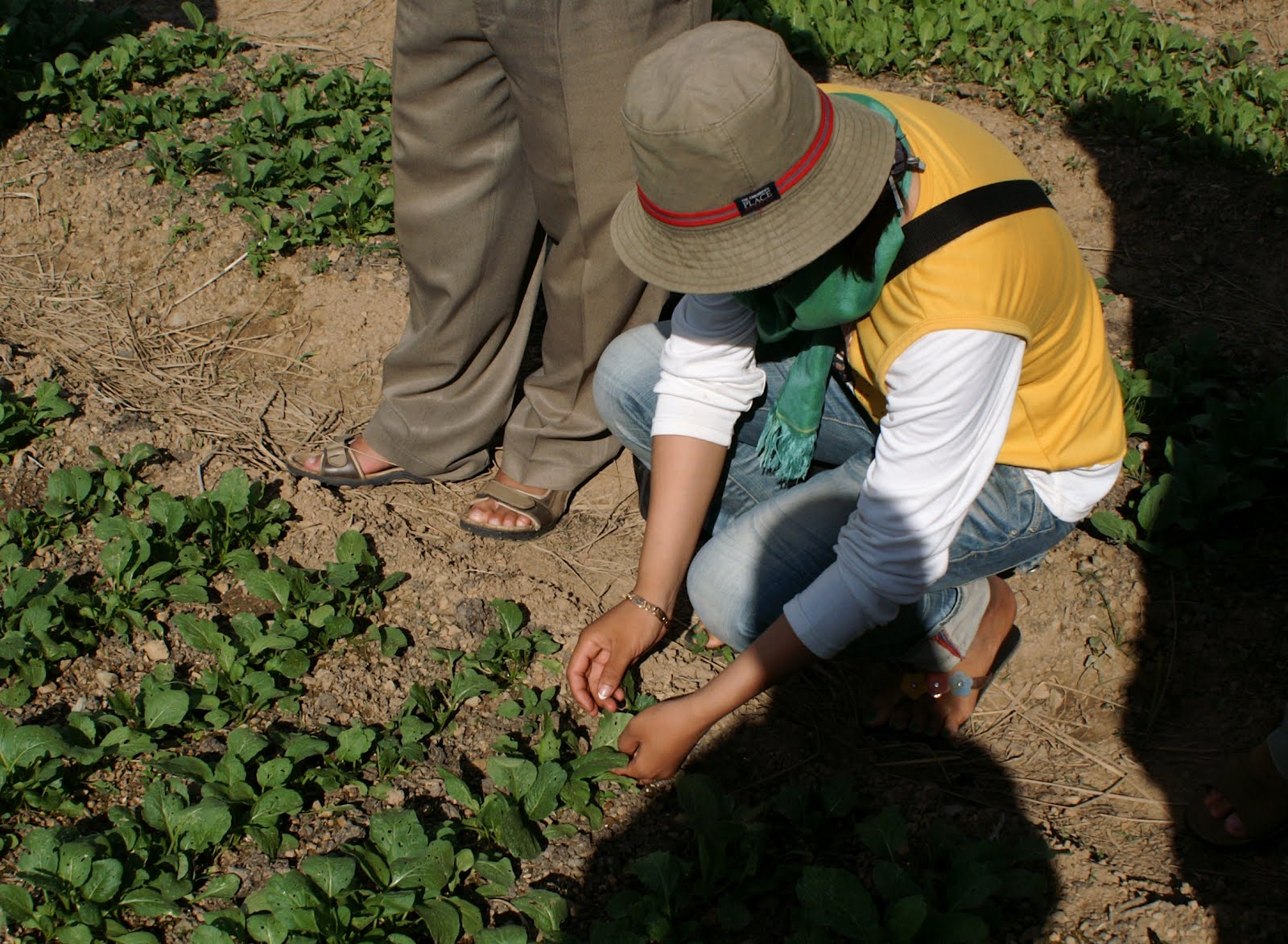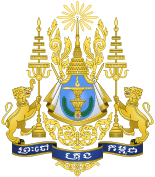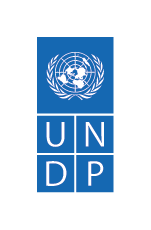Cambodia's Second National Communication
Project Overview
The creation of a National Communication offers countries the opportunity to contribute with technically sound studies and information that can be used for designing mitigation and adaptation measures, and project proposals that can and will help increase their resilience to the impacts of climate change. Activities generally include: V&A assessments, Greenhouse Gas Inventory preparation, Mitigation Analysis or Education, and awareness raising activities. The ultimate goal is the integration of climate change considerations into relevant social, economic and environmental policies and actions.
Cambodia has identified several adaptation needs in the priority sectors of agriculture, and forestry. With respect to agriculture, adaptation suggestions include: development of new high-yield crop varieties, improved crop management, warning systems for extreme weather events, and improvement of irrigation. Within the forestry sector, Cambodia suggests the creation of forest plantations on otherwise unproductive lands, conservation of protected areas, and improved forest resource management. Other measures aim at improving human health, including education and disease control measures. In coastal zones measures include the development of a strategic response to sea level rise including studies of impacts, improved management and capacity building of local residents.
To view progress on Cambodia's SNC click here.
Project Details
The Kingdom of Cambodia is located in mainland Southeast Asia between latitudes 10° and 15° N and longitudes 102° and 108° E. Cambodia covers an area of 181,035 km2 with a total population of 14.7 million people (CIA, 2011). Approximately 80 percent of this population lives in rural areas. The country is classified as being among the least developed in the world, with a GDP per capita of US $297 in 2002 (NIS, 2003). The country’s economy has grown considerably over the past several years, with manufacturing, tourism and agriculture representing major economic sectors (USDS, 2010). Cambodia faces particularly acute challenges related to climate change including a need to build domestic capacity to address challenges related to health, agriculture and water resources. Administratively, the country is divided into 20 provinces and 4 municipalities with a total of 183 districts and 1,609 communes (NIS, 2004). The climate is characterized by a dry season from mid November to mid May and a rainy season from mid May to mid November. The annual average temperature is 27°C, and rises to a maximum of 38°C in April or May and falls to a minimum of 14°C in January or December.
Climate change can no longer be ignored. Even farmers in Teuk Krahom commune in Preah Vihear province and Bos Leav commune in Kratie province have seen notable changes in terms of the climate over the years. In Teuk Krahom commune farmers see themselves as very vulnerable to droughts; while in Bos Leav, the vulnerability stems from droughts, floods and storms. In Teuk Krahom commune, all the villages have noticed a definite increase in the frequency and length of droughts. Similarly in Bos Leav commune, despite being known as flood-prone areas, all villages within this commune have noticed an increase in the frequency of droughts. In general, floods seem to have stayed steady over 30 years and some farmers have even noticed declines in floods.
Farmers in both communes feel that CC is already affecting their livelihoods in the following main areas: Firstly, droughts and heat negatively impact on the animal health. Animals die because of the heat and diseases, which increase during drought months. Secondly, farmers also see CC impacting negatively on rice yields. Water stress from the heat and droughts affect grain development resulting in low rice yields. The damage to rice also extends to other crops like vegetables grown in the area. Thirdly, droughts dry up the limited water resources, which in turn limit the ability to irrigate during droughts as well as dry season cultivation. In Bos Leav the impact of CC seems to be compounded by silting up of the lakes and dams from deforestation and subsequent soil erosion. Fourthly, human health is also being negatively affected by CC. Farmers noted that diseases like diarrhoea and stomach problems increase as water quality deteriorates in the dry season. Lastly, farmers in Bos Leav mentioned that storm also destroy dams, homes and roads. Farmers feel that animal health, human health, waters resources and crops yields will be most impacted if CC increases. They also see an increase in food insecurity and a decrease in income if CC increases.
However, all is not doom and gloom. Farmers in both areas see institutional support from NGOs and government as playing a key role in reducing CC vulnerability. This was very strong in Bos Leav which has a large number of NGOs working in the area. NGOs provide humanitarian aid during flood disasters in forms of mosquito nets, food, tents, and evacuation shelters among others. Village animal health workers, who assist in livestock management, were also seen as important. Existence of lakes and dams in Bos Leav and to some extent in Teuk Krahom, also plays an important role in reducing the impact of CC. Some villages in Teuk Krahom see protected forests as providing food and non-timber products which they can sell in lean months.
When asked about the main barriers to CC adaptation, farmers in Teuk Krahom mentioned lack of water resources as the main hurdle followed by lack of money, lack of access to agricultural techniques, lack of CC information and lack of institutional support. In Bos Leav, lack of access to improved rice varieties, lack of access to agricultural techniques, water resource and lack of money are seen as the main hurdles. Accordingly, farmers in both areas felt that their vulnerability indices would improve if the project focused on the following areas: Providing access to improved rice varieties. These are rice varieties that are early maturing, resistant to droughts and floods, high yielding and also high value; providing extension services on how to grow rice and other crops, manage livestock and aquaculture; rehabilitating and constructing irrigation systems, digging perennial community ponds in Teuk Krahom, while Bos Leav asked for deepening and rehabilitation of dams, canals, water gates and natural lakes.
Adaptation Needs and Priorities:
Cambodia submitted a National Adaptation Programme of Action (NAPA) to the United Nations Framework Convention on Climate Change (UNFCCC) in 2007 (MOE, 2006). Its NAPA outlines Cambodia’s main areas of concerns related to water management and agriculture, as well as the development challenges that compound the country’s vulnerability to climate change. Cambodia reports an increasing severity of floods and droughts, which has led to crop failures and contributes substantially to poverty levels (MOE, 2006). In its NAPA, Cambodia specifically identified some of the primary needs and threats that it faces with respect to adaptation, as well as priority sectors targeted for action, including agriculture, water resources, coastal zones and human health. It also notes the need for flood protection enhancement through initiatives like riverbank improvements, particularly in areas of the Mekong watershed; and for food security protection to address floods and adverse weather events.
Through its Initial National Communication to the United Nations Framework Convention on Climate Change (UNFCCC) Cambodia identified adaptation needs in the priority sectors of agriculture, and forestry. With respect to agriculture, adaptation suggestions in the National Communication include: development of new high-yield crop varieties, improved crop management, warning systems for extreme weather events, and improvement of irrigation. Within the forestry sector, Cambodia suggests the creation of forest plantations on otherwise unproductive lands, conservation of protected areas, and improved forest resource management. The National Communication also discusses adaptation priorities within the area of human health, including education and disease control measures, as well as in coastal zones, including the development of a strategic response to sea level rise including studies of impacts, improved management and capacity building of local residents (MOE, 2002).
In addition there has been considerable research on the relationship between climate change and fisheries in Cambodia. Fisheries are a critical component of rural livelihoods and makes up as much as 80 per cent of the animal protein in a traditional diet. Hydrological variation in the Mekong Basin induced by climate change is predicted to amplify the emerging boom and bust cycle of fish catches, resulting in less stability for rural people. It is argued that fisheries and aquaculture can provide compensation for other adaptation problems such as low lying agricultural land and should be considered a key component of adaptation strategies in the country.
National Level Policies:
Cambodia’s Initial National Communication to the UNFCCC was published in October 2002 (MOE, 2002). It speaks about adaptation needs generally and does not list potential adaptation options. These priorities were more clearly articulated in its NAPA, in which poverty reduction and increased agricultural production are repeatedly mentioned as the central goals of Cambodia’s adaptation efforts. For Cambodia, adaptation policy and development policy are closely linked, and are at the forefront of the Rectangular Strategy for Growth, Employment, Equity and Efficiency. The Climate Change Department of the Ministry of Environment of Cambodia is in the process of finalizing Cambodia’s Second National Communication (SNC) to the UNFCCC. These efforts include preparation of National Adaptation and Mitigation Plans and identification of technology, institutional and policy gaps. The SNC work will culminate in the preparation of the Climate Change Strategy and Action Plan, which is expected to commence in 2011.
Cambodia has a number of national policies on poverty, the environment and development; however adaptation is not a prominent component of these policies. The country’s NAPA currently is the cornerstone of Cambodian adaptation planning and priority action identification. Major policy frameworks are much more generally focused and have goals more related to sustainable resource management and poverty reduction; as such, they have adaptation co-benefits.
Current Adpation Action:
There are a number of nationally and regional adaptation projects and programs occurring in Cambodia at present. National projects are focused on capacity building, as well as some policy formulation, awareness raising, knowledge sharing, and community based adaptation activities. The main sectors of focus are agriculture, water, risk reduction and meteorology. Cambodia is participating in a slightly higher proportion of regional projects. These projects are primarily focused on capacity building, vulnerability assessment, research, and policy formulation within the areas of health, nature, water, risk reduction, and policy. Funders active in supporting adaptation action in Cambodia include: the Least Developed Countries Fund (LDCF), the World Bank’s Climate Investment Facility, and the governments of Denmark, the European Commission, Sweden and the United States.
Proposed Adaptation Action:
Through the completion of its NAPA, Cambodia identified a number of priority adaptation projects for funding. The level of detail for these proposed actions is quite general and may be elaborated upon in the future. As well, Cambodia has proposed projects for funding to the Special Climate Change Fund (SCCF).
Assessment:
Climate change is a high priority for Cambodia, as acknowledged through its national level strategic cross-sectoral planning, as well as through completion of its NAPA. The country has made progress in identifying key adaptation goals and priorities, and the government has established high level of knowledge on where its current adaptation gaps lie. Of the key adaptation priorities identified by the country, it appears that the areas of agriculture and water are receiving the bulk of attention through ongoing adaptation projects, although there appears to be a need for concrete initiatives such as building dikes to minimize the impacts of floods and testing climate resilient crops. A number of ongoing projects are also working to improve domestic capacity to address climate change at the policy level. Gaps in adaptation action appear to exist within the following areas:
- Human health: Identified as a priority through the country’s NAPA and National Communication, there are presently very few adaptation activities addressing health underway in the country.
- Coastal zones: There presently do not appear to be any projects occurring within this area; however certain ongoing projects addressing adaptation within the water sector may touch upon these coastal zones although this is not explicitly mentioned.
- Fisheries: Fisheries are a critical part of the Cambodian’s diet and future project work may seek to expand adaptation initiatives within this sector.
- Gender: although a component of a couple of regional projects, none of the initiatives identified in Cambodia specifically aim to understand and respond to the gender dimensions of climate change.
References:
- Gass, Philip; Hove, Hilary; Parry, Jo-Ellen. (2011) “Review of Current and Planned Adaptation Action: East and Southeast Asia.” Adaptation Partnership / International Institute for Sustainable Development.
- Central Intelligence Agency [CIA] (2011). The World Factbook: East and Southeast Asia::Cambodia. Retrieved from https://www.cia.gov/library/publications/the-world-factbook/geos/cb.html
- Ministry of Environment [MOE] (2002). Cambodia’s Initial National Communication under the United Nations Framework Convention on Climate Change. Retrieved from http://unfccc.int/resource/docs/natc/khmnc1.pdf
- Ministry of Environment [MOE] (2006). National Adaptation Programme of Action to Climate Change (NAPA). Retrieved from http://unfccc.int/resource/docs/napa/khm01.pdf
- United Nations Development Program [UNDP] (2010). Human Development Index (HDI) – 2010 Rankings. Retrieved from http://hdr.undp.org/en/statistics/
- United States Department of State [USDS] (2010). Background Note: Cambodia. Retrieved from http://www.state.gov/r/pa/ei/bgn/2732.htm
Key Results and Outputs
- Sustainable development and the integration of climate change concerns into medium- and long-term planning
- Inventories of anthropogenic emissions by sources and removals by sinks of greenhouse gases
- Measures contributing to addressing climate change
- Research and systematic observation
- Climate change impacts, adaptation measures and response strategies
- Education, training and public awareness
Potential Adaption Measures:
Agriculture and Food Security
- Educational & outreach activities to change management practices to those suited to climate change
- Enhance irrigation efficiency and/or expand irrigation
- Develop and introduce policy measures, including taxes, subsidies, facilitation of free market
Water Resources
- Increase water supply, e.g. by using groundwater, building reservoirs, improving or stabilizing watershed management, desalination
- Develop and introduce flood and drought monitoring and control system
Coastal Zones and Marine Ecosystems
- Develop Integrated Coastal Zone Management
- Develop planning/new investment requirements
- Protect, including building sea walls, and beach nourishment
- Research/monitor the coastal ecosystem
Monitoring and Evaluation
In 1992, countries joined an international treaty, the United Nations Framework Convention on Climate Change, to cooperatively consider what they could do to limit average global temperature increases and the resulting climate change, and to cope with whatever impacts were, by then, inevitable.
Parties to the Convention must submit national reports on implementation of the Convention to the Conference of the Parties (COP). The required contents of national communications and the timetable for their submission are different for Annex I and non-Annex I Parties. This is in accordance with the principle of "common but differentiated responsibilities" enshrined in the Convention.
The core elements of the national communications for both Annex I and non-Annex I Parties are information on emissions and removals of greenhouse gases (GHGs) and details of the activities a Party has undertaken to implement the Convention. National communications usually contain information on national circumstances, vulnerability assessment, financial resources and transfer of technology, and education, training and public awareness.
Since 1994, governments have invested significant time and resources in the preparation, collection and validation of data on GHG emissions, and the COP has made determined efforts to improve the quality and consistency of the data, which are ensured by established guidelines for reporting. Non-Annex I Parties receive financial and technical assistance in preparing their national communications, facilitated by the UNFCCC secretariat.




